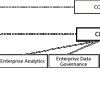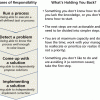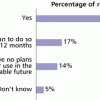Business Transformation Requires Transformational Leaders
Leadership and teaming skills are front and center in times of rapid change. Meet today’s constant disruption head on with expert guidance in leadership, business strategy, transformation, and innovation. Whether the disruption du jour is a digitally-driven upending of traditional business models, the pandemic-driven end to business as usual, or the change-driven challenge of staffing that meets your transformation plans—you’ll be prepared with cutting edge techniques and expert knowledge that enable strategic leadership.
Recently Published
The Role of Chief Data Officer in the 21st Century
Many, many years after enterprise resource planning and over two decades into data warehousing, many business executives are still frustrated over their inability to trust their company's data. They have spent millions on new technologies, only to find that the state of their data assets has deteriorated. This significantly reduces the business value of their investments. One big reason for this continuing data chaos is that companies do not manage their data as a business asset, and there is no one watching the store. In this Executive Report, we look at the role of chief data officer and why this role is so important. Not a Cutter client yet? Download a free copy of the report now.
The Role of Chief Data Officer in the 21st Century (Executive Summary)
Let's be clear: data is a critical asset along the same lines as inventory, cash, buildings, personnel, and accounts receivable. Without good data, we are unable to make the correct operational, tactical, and strategic decisions that are the difference between those organizations that live and those that die. Yet there are very few organizations that have stepped up and established the role of a chief data officer (CDO) with the responsibility and authority to deal with the many complex and interrelated issues, both political and technical, that swirl around data. In the accompanying Executive Report, we look at this role and its responsibilities.
Agility and Discipline in Business Processes: A Case Study
So What Is Big Data?
The term "Big Data" is becoming part of the common vernacular. So what does it mean? Basically, Big Data refers to the huge amount of data created and collectively examined through many online sites, as well as offline sites and vast repositories. The amount of data created now is staggering when compared to just a few years ago. Consider the following:
Part III of this series provides practical advice for launching a business-IT architecture misalignment initiative in practice. Topics covered include business as a change agent in business-IT transformation, building executive support, transformation scenarios, and establishing governance and funding.
Last year, I had a client identify a concern regarding the communications gap that seemed to exist between team members in the trenches and those in the executive suite. The response? We developed a series of "Communicating UP" workshops, designed to facilitate better communication up the food chain. It was a surprising success.
Last week, in Part I of this Advisor, I discussed important changes I saw happening in the Hadoop/Big Data world in order to accelerate enterprise adoption of the technology (see "Big Changes on the Horizon for Big Data -- Part I").














